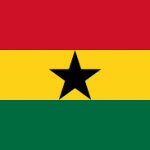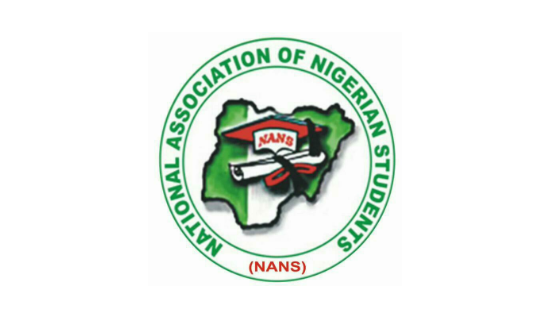“Say she looking into my eyes and she seeing designer
Gucci, Dolce & Gabbana (Dolce & Gabbana)
Dolce & Gabbana (Dolce & Gabbana), yeah”
David Adeleke, popularly known as ‘Davido’, is the son of my brother, Dr. Adedeji Adeleke. Davido is in a sense my son and I take him as such. The 27-year old star has done wonders with his talent and even though he didn’t need to work too hard for his daily bread, considering his clearly privileged background, he is a good example of self-reliance and diligence. He has remained very successful in his chosen field; a cultural icon and influencer, a significant economic agent and an employer of labour in today’s Nigeria.
Towards the end of last year, Davido released a song titled ‘D&G’, which stands for Dolce & Gabbana. Part of the lyrics of the song has been reproduced above. The song, just like many others in his repertoire, became an instant hit. Dolce & Gabbana is an Italian luxury design company that sells premium and expensive apparel. It was set up 35 years ago by Domenico Dolce and Stefano Gabbana. It has become so successful that its 2018 revenues hit $1.5bn, with over 3,000 employees, across the world. This same song mentioned another brand, Gucci, a much older Italian luxury goods designer brand that has been around for almost 100 years. Gucci’s annual revenues as at 2017, stood in excess of $7bn from its operations at over 550 locations across the world. These brands, together with many others, have dominated the clothing industry for years. Here in Nigeria, it is a mark of success to adorn some of these designs. Just like any other thing, fake versions of the original products continue to compete for space. Interestingly, many of these designers had since outsourced manufacturing of parts or the whole products to countries with cheap labour. In other words, the only thing that they do is lend their name to the third world efforts and simply tell them what they want to be produced for them.
The production units of these well-known brand names are found in many parts of the developing economies, mainly Asia, but some Latin American and even some hard-working African countries, have joined in producing for these big designer companies. Sometimes, in efforts to cut costs, these production facilities are turned into ‘sweat shops’, where unscrupulous labour practices are carried out. Generally, they are very good sources for base manufacturing, and it has been one of the platforms that countries like China, India, Bangladesh and Vietnam, have used to launch into technology transfer.
Unfortunately, Nigeria has not been a beneficiary of the outsourcing policies, despite the tailoring prowess of cities like Aba. The reason for this is not far-fetched. Being a consumption-oriented society, we are amongst the top contributors to the success of some of these businesses, which we should be operating. And as these businesses continue to flourish, our local currency, industrial capacity, labour market and skills continue to struggle. One of the sectors that has born a lot of the brunt is the Textile Industry, better known as the Cotton, Textile and Garment (CTG) Industry.
The advent of Coronavirus has forcefully brought our attention to the fact that we must think and act differently. In fact, the message staring us in the face is that we must hit the reset button and recalibrate our economy and its structure if we are to survive the crisis. Job Creation and poverty reduction are major areas of focus. The reality of insufficient foreign currency inflows and the need to manage the post Covid -19 foreign exchange market, would require that we think deeply about those sectors that would reduce the demand pressure on foreign currency. One of such sectors in our opinion, is the moribund CTG industry. Up until early 1990s there were over 180 textile mills in the country employing directly, over 500,000 people. It was the largest employer of labour after the Public Sector. One of its most recognisable employees is the current Chairman of the ruling APC, Comrade Adams Oshiomhole. His claim to fame started from his days as a labour leader in the textile industry. These mills relied on the supply of cotton from over 600,000 local cotton farmers in addition to other indirect engagements in the logistics and transport segments of the chain. These cotton farmers were spread amongst 30 out of the 36 states of the federation. By 1995, Nigeria joined the World Trade Organisation and in accordance with WTO rules, Nigeria had to remove any protection of the local textile industry. This singular action threw our borders open to unfair competition and importation and smuggling of textile and garments from Asia and other parts of the world. In view of the fact that these other countries had cheaper production costs and smarter economic policies, which included dumping where necessary, our CTG Industry came under ferocious attack. The result was that in less than a decade, we were down to less than 30 textile mills with less than 40,000 jobs available. Cotton farming, naturally disappeared with the 600,000 farmers thrown into the job(less) market.
There was a lot of other difficulties that this industry had faced and continues to face. One of them is very high operating cost profile. Closely related to costs is lack of basic infrastructure and overall government neglect. This was one of the ugly consequences of dependence on oil. The infrastructural problem that came from this type of neglect, remains a major challenge to every industry in the country today. Companies operating in Nigeria, are left to generate their own electricity, water and transportation and these are what competitors producing in Asia and Europe take for granted. In an open market, products from Nigeria stand no chance to compete in price, even if they were of better quality. Therefore, opening local products to competition with imported ones is akin to sending a boxer to the ring in a champion fight, with his hands tied behind his back. The result was predictable and that is exactly what happened to Nigeria’s products.
Even where the cost structures were similar, countries have been known to implement a dumping policy on others, if just to crush competition and attain market dominance. Some countries take a strategic decision to subsidise some industries like the USA will always do for agriculture to keep its farmers in business and protect local jobs, local capacity and most importantly, food security. Again, smuggling has been the bane of Nigeria’s textile industry. Even when outright bans have been officially pronounced, smugglers would ensure that those policies would benefit the illicit trade. We believe that the closure of the borders even before the pandemic was to frustrate smugglers and drive them out of business. While this may work for a moment, we hold the view that this policy is not based on sound economic fundamentals and is therefore not sustainable. Our belief is that we must get policies of government to work and if those vested with the authority to ensure compliance compromise instead, we should deal with them as the law demands, rather than work around them. Of course, we must also give them the required tools and incentives that will help them deliver.
We should not lose sight of the fact that the elements in the value chain in the CTG sector include cotton growing, ginneries, spinning and weaving, printing and garments production. While textiles may look like the strongest link in the chain, Cotton remains the primary product or element and without it, the rest of the sector is doomed to fail. Though cotton may appear to be ubiquitous in the country, the quality of naturally occurring species is poor and susceptible to devastation by pests. Yield per hectare is below the standards witnessed in the competitor countries that currently have market dominance. This has a strong impact on the quality of final products. To deal with the issue of quality of seedlings, two home-grown genetically modified varieties known as BT cotton, have been approved by government and we must commend that action. These varieties are neither subject to pest attacks nor low yields. By the way, experts claim that devastating insect pests cause a cotton yield loss of about 60 percent. With the government approved varieties, use of excessive chemicals to control insects become unnecessary and the yield is exceptionally high. Again, the higher yields possible with BT cotton will help cotton farmers to transit from subsistence to large-scale farming.
The WTO scenario that got the country into a free trade agreement, even though avoidable, fits into an ideological debate. A school of thought argues that the economy has an in built self-regulating mechanism, called ‘market forces’. This phenomenon deals with the side effects of the interplay of demand and supply in the market. A subsequent modification of this position was propounded by another school of thought which holds that there is actually no such thing as in-built mechanism and therefore assigns government the major role of intervening, to ensure that the economy continues to work smoothly for its citizens. The removal of protective hedges around our textile industry and as a matter of fact other industries, is largely the reason for the de-industrialisation of the Nigerian economy. If you subject everything to the classical economic theory of market forces, you may end up destroying your economy. It is too early to forget that the unregulated creation of mortgage loans in the USA led to the sub-prime- lending-induced economic crises of 2008/2009. We are therefore of the view that both the Federal and State Governments should use this pandemic opportunity to pursue a policy of self-reliance, import dependency reversal and job creation. If this is accepted, the CTG industry comes to mind as a low hanging fruit. The governments mentioned above should not be afraid to support this industry with subsidies, grants and cheap loans, to help it mature and become competitive again. This is the whole idea of protection of infant industries. These measures should be implemented now and driven to such a level that any importation cannot effectively withstand local competition in the marketplace.
We are not unaware of the different efforts made by present and past administrations in the last ten years to resuscitate this vital sector of our economy. On record is the N30bn loan scheme set up by the Bank of Industry in 2010 to revive the textile industry. Our opinion is that it is not just about throwing money at the industry. A comprehensive policy framework and the enabling laws to protect the industry must be in place before we bring in the cash otherwise, it will simply go down the drain, as would seem to have been the case thus far. The General Secretary of the National Union of Textile, Garment and Tailoring Workers Of Nigeria, my good friend and brother, Comrade Issa Aremu had consistently argued that the textile industry sustained the regional governments of old and that state governments should pay more attention to this potential cash cow for job creation and internally generated revenue. One could understand that the oil windfall made it unattractive to heed this advice. With the current situation in the international crude oil market, one believes that the attention of the state governments should shift to this alternative revenue source.
In appreciation of the point being made here, the CBN Governor, Godwin Emefiele, had also made commendable moves to protect this industry by restricting importation of textile materials and pronouncing textile ineligible for allocation of foreign exchange at official rates. While that would have helped, the truth is that it will have relatively little impact as importers would naturally source funding from unofficial sources. In reality, this is what they have been doing ever since. If this industry can contribute close to 60% of export revenue, 8.5% to GDP and 45% of total employment for Pakistan; 81% of export earnings, 12.4% of GDP and over 60% of labour force for Bangladesh and 2% of GDP and 45 million direct jobs as well as 15% of export earnings for India, then it is a sector that we ignore at our own peril. It is even more apposite to point out that before the onset of the oil boom, Nigeria was one of the world’s largest exporters of cotton!
As we struggle to diversify and replace oil as our major foreign exchange earner and economic driver, we recommend that both the states and the federal government should pay greater attention to the CTG industry given that cotton exists in most of the states. The last time we checked, over $4bn was the annual import bill for textile. It is most likely that this bill has declined now but it is arguable that this decline has led to any positive impact on job creation or production capacity in the country so far. A more comprehensive and well-coordinated policy is therefore an imperative now. We should make deliberate efforts to support the sector the same way we had supported the oil sector for decades. We should put money at the disposal of the industry and ensure that we have knowledgeable people who would ensure flawless execution of agreed deliverables. As we embark on these reform measures, we must also ensure that our superstars begin to show greater faith and support for our locally made goods. We should ensure that great Nigerians personalities who have a cult following in many parts of the world proudly buy and wear made in Nigeria clothes. If we do nothing, then the Guccis and D&Gs of this world would continue to dominate this market with products made in China and Bangladesh, not to talk of other African countries.









